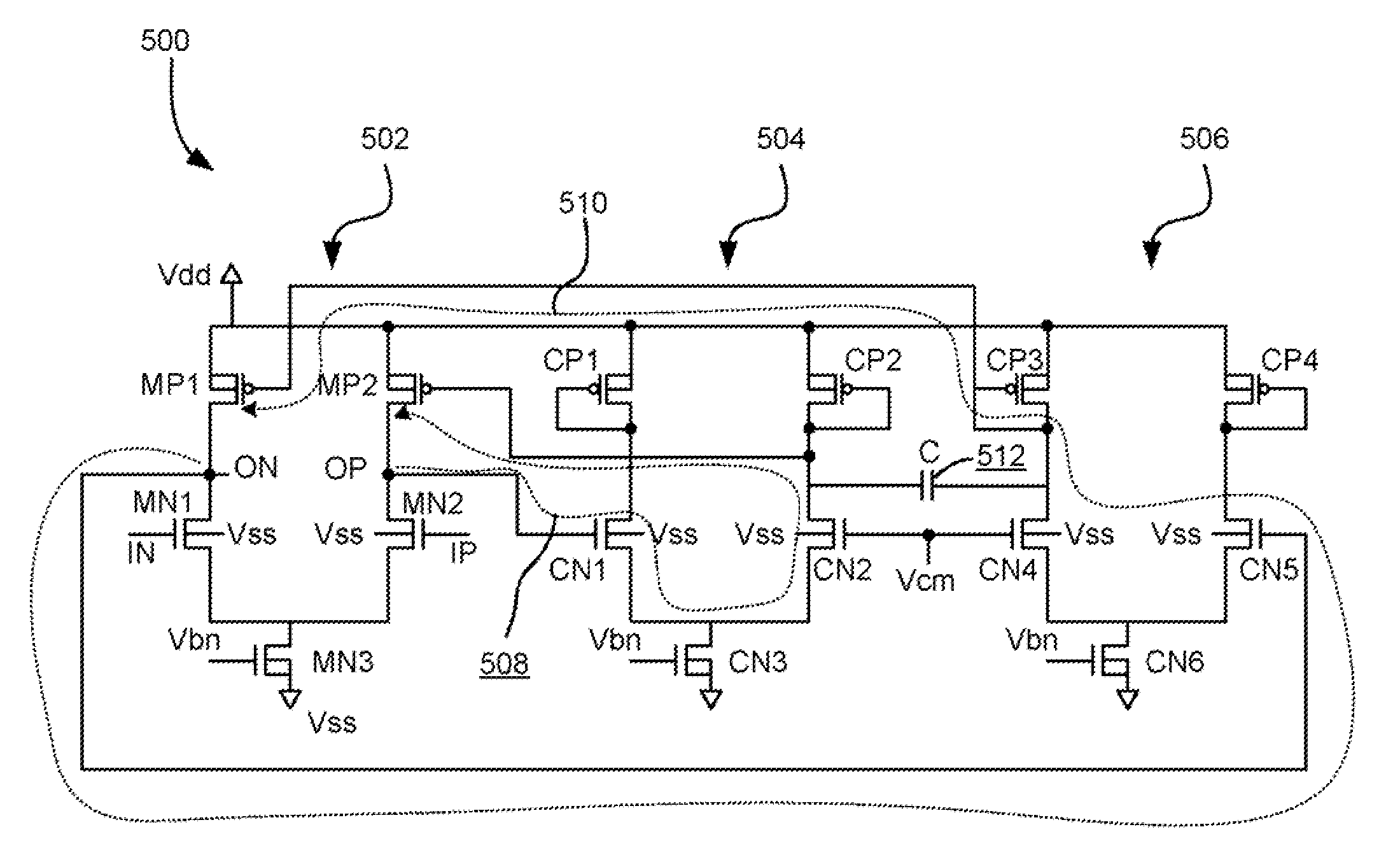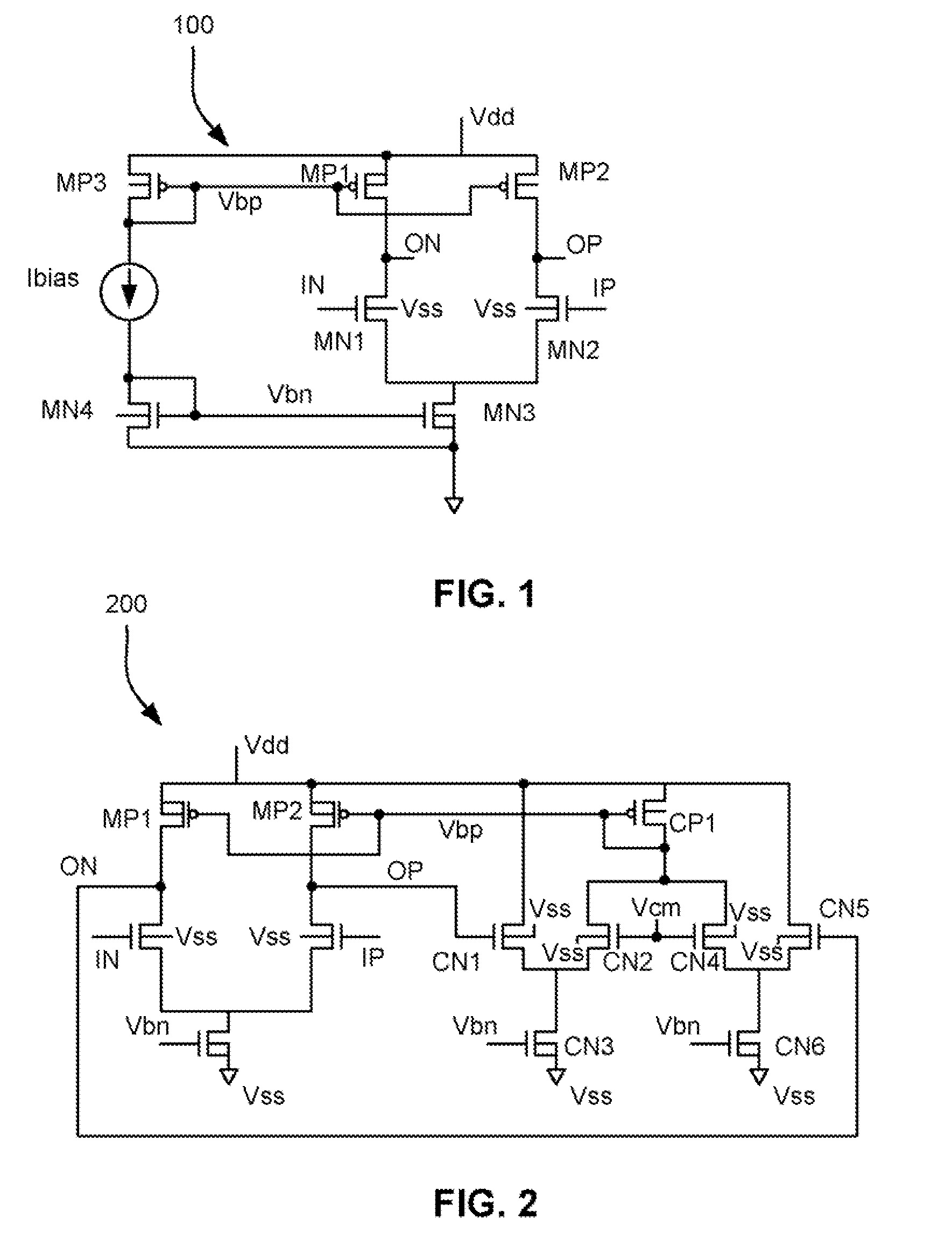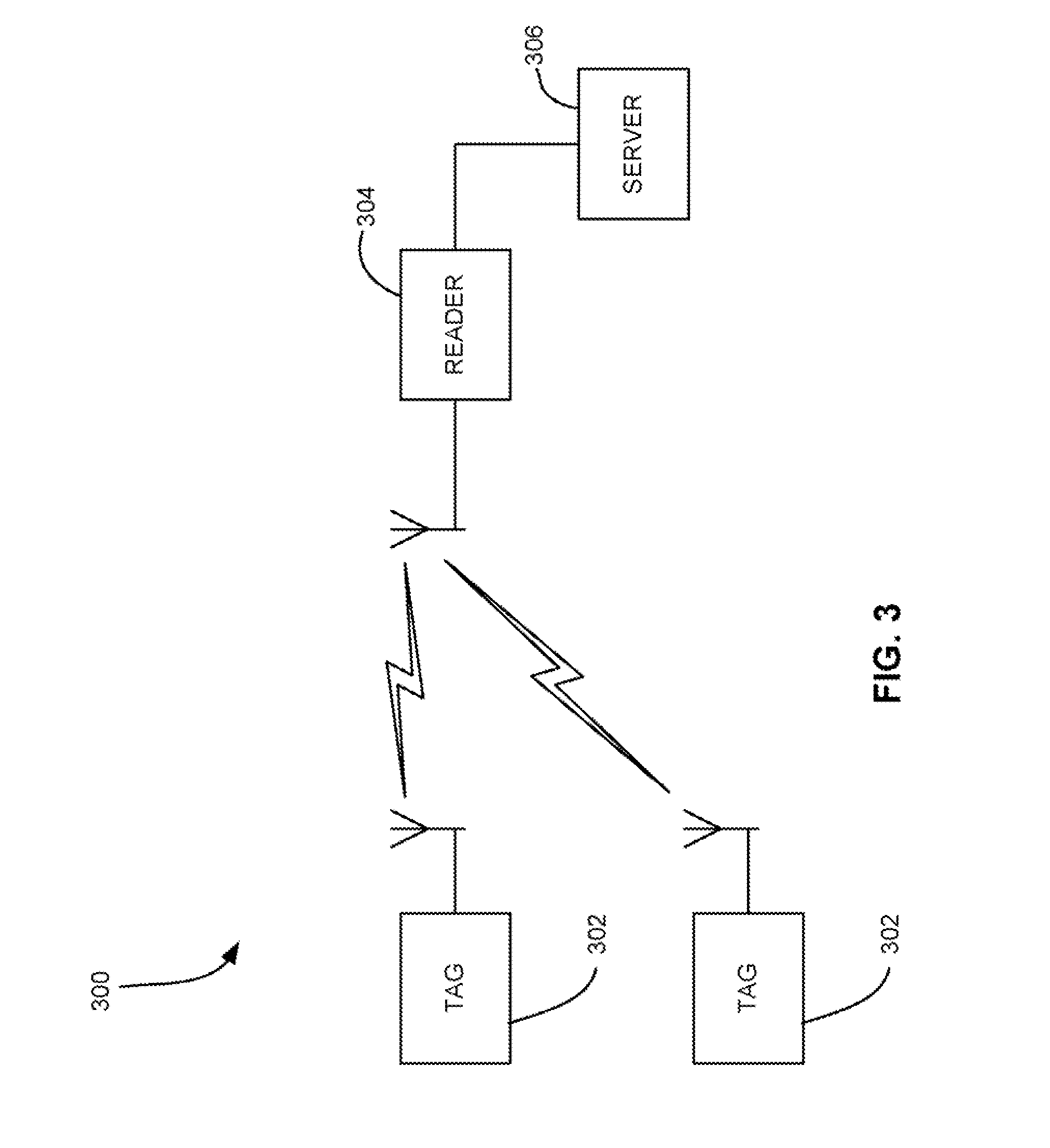Fully differential amplifier with continuous-time offset reduction
a technology of offset reduction and differential amplifier, applied in the field of amplifiers, can solve the problems of reduced signal-to-noise ratio, physical implementation of operational amplifier, and reduced useful dynamic input range and output range of operational amplifier, and achieve the effect of reducing the offset voltage of the first output signal and the offset voltage of the second output signal
- Summary
- Abstract
- Description
- Claims
- Application Information
AI Technical Summary
Benefits of technology
Problems solved by technology
Method used
Image
Examples
embodiment 600
[0086]FIG. 8 illustrates an alternate embodiment 600. The inventors have found that the more the current is controlled by the common-mode feedback loop, the more efficient the feedback loop is at correcting the offset voltage. According to calculations performed by the inventors, the ratio of current controlled by the common mode feedback loop to total amount of current vs. offset voltage amplification corresponds to the following for the first stage; ratio=½, offset voltage gain=1; ratio=¼, gain=2; ratio= 1 / 7, gain=4.
embodiment 700
[0087]FIG. 9 illustrates another alternate embodiment 700, wherein the second and third sections 504. 506 have no CP1 and CP4.
embodiment 800
[0088]FIG. 10 illustrates an alternate embodiment 800, where the second and third sections 504, 506 each have an individual capacitor 802, 804 associated therewith. In this way, the first and second feedback loops 508, 510 are each coupled to an individual low-pass filter created by the respective section and capacitor combination.
[0089]While the embodiments shown in FIGS. 5 and 8-10, and variations thereof, are suitable for many applications, they may have certain limitations in other applications, making embodiments described subsequently preferred for some applications. For instance, to maintain low bandwidth filter characteristics, the current flowing through the second and third sections of the embodiments shown in FIGS. 5 and 8-10 needs to be very low. However, the first section might need a large amount of current to achieve large bandwidth for quick settling, pattern jitter reduction, and amplification purposes. In such a case, the current flowing through first section load ...
PUM
 Login to View More
Login to View More Abstract
Description
Claims
Application Information
 Login to View More
Login to View More - R&D
- Intellectual Property
- Life Sciences
- Materials
- Tech Scout
- Unparalleled Data Quality
- Higher Quality Content
- 60% Fewer Hallucinations
Browse by: Latest US Patents, China's latest patents, Technical Efficacy Thesaurus, Application Domain, Technology Topic, Popular Technical Reports.
© 2025 PatSnap. All rights reserved.Legal|Privacy policy|Modern Slavery Act Transparency Statement|Sitemap|About US| Contact US: help@patsnap.com



